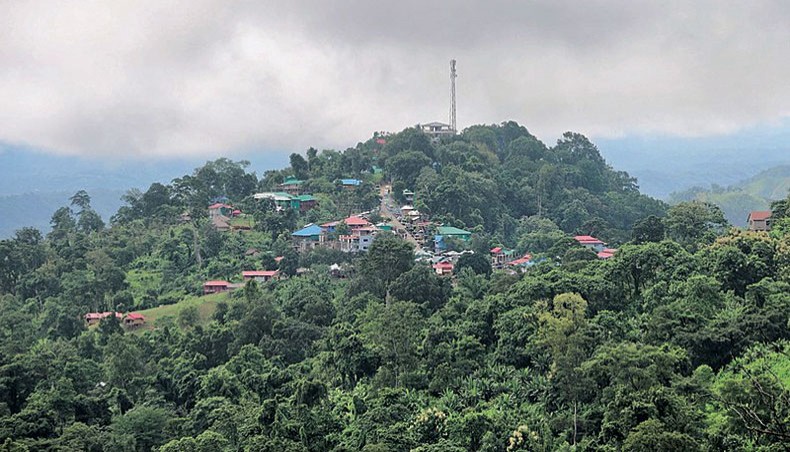by M Rashiduzzaman | Published: 00:00, Jan 25, 2023
 NOT a compact between two or more sovereign nations, the 1997 CHT Peace Accord — a triangular partnership between the then Awami League-run government, the Santu Larma-led Shanti Bahini and India, the not-so-hidden partner — carried the potentials for its own implosion. Even some of those who ceremoniously accepted the peace settlement reckoned that the accord was only the beginning of their ‘ultimate autonomy’ — a euphemism for secession. But the Bangladeshi political elite, irrespective of their ideological inclinations, could not relinquish the sovereignty over the strategically vital CHT, the 10 per cent of the total Bangladesh territory. Beyond the accord-transferred responsibilities to the ethnic minority-controlled three district councils and the larger regional council, the hill leaders demanded more closing of the military outposts, tough restrictions on the Bengali immigrants and more resources for the hills, to mention a few of those demands.
NOT a compact between two or more sovereign nations, the 1997 CHT Peace Accord — a triangular partnership between the then Awami League-run government, the Santu Larma-led Shanti Bahini and India, the not-so-hidden partner — carried the potentials for its own implosion. Even some of those who ceremoniously accepted the peace settlement reckoned that the accord was only the beginning of their ‘ultimate autonomy’ — a euphemism for secession. But the Bangladeshi political elite, irrespective of their ideological inclinations, could not relinquish the sovereignty over the strategically vital CHT, the 10 per cent of the total Bangladesh territory. Beyond the accord-transferred responsibilities to the ethnic minority-controlled three district councils and the larger regional council, the hill leaders demanded more closing of the military outposts, tough restrictions on the Bengali immigrants and more resources for the hills, to mention a few of those demands.
Stuck between the ancestral leaders’ unyielding pressure for more relaxation authority in the hills and the government’s comprehensible security fears, the much-vaunted accord was wedged in an impasse. Meanwhile, the humanitarian organisations and a few amongst the international bodies blamed the government for its presumed ‘non-implementation’ of the accord provisions. The Bengali incomers, on the other, complained that they faced ‘harassment and torture’ in all spheres of life in the hills.
In coherence with a few claims, more than 600 people belonging to the non-Bengali ethnicities lost their lives — mostly one dissident group attacking the other since the accord came into force in 1997. Additional losses of lives resulted from the skirmishes between the armed rebel groups and the security forces. Recurrent conflicts between the Bengali settlers and the indigenous inhabitants further resulted in more arson, deaths, injuries, and purported sexual assaults.
But the UPDF, too, went through its own tear when a new group surfaced as the UPDF-D led by Tapan Jyoti Chakma in 2017 and its internal rupture did not end there. Those fragments plus the Sama Adhikar Andolan and the Parbatya Bangalee Chhatra Parishad set as the regional local parties for the hill population — they, too, had tenuous liaison with the country’s larger political parties. Beyond those ethnic groups, the Bengali settlers have their own organisations and alignments with the major national parties of different stripes — they campaign for their own security and the right to live in the CHT.
Even without a widespread insurgency since the 1997 Peace Accord, the government believes that ongoing factional rivalries and turmoil demand additional military resources in the hills, which the indigenous leaders vehemently opposed. Out of hundreds of temporary army camps, only 30 or more such outposts were conceivably abandoned by the military to partially satisfy the accord terms. When the dissident factions or armed rebel bands captured those empty spots, the army hesitated about the camp-abandonment process for safety reasons. As many as 16 security persons and 190 Bengali civilians were killed from 1997 to 2021 and the casualty figures could rise higher if the up-to-date data are available. (see also ‘Bangladesh: CHT and Violent Factionalism – Analysis’, in Eurasia Review, August 31, 2022).
Is the KCNF a glimpse of the CHT’s troubled potential? Sometimes, the smugglers, gunrunners, criminals, and drug carriers masquerade as terrorist groups to scare off their competitors and the law enforcers. By massively pushing the Rohingya refugees in the already troubled expanse, Myanmar has further unsettled the insurgency-prone region. The international humanitarian help to the displaced people has only increased the Bangladeshi security burdens in the region. A complex network of cross-border separatists from India’s northeast, Myanmar and Bangladesh destabilises the hills by way of dripping violence across the landscape. While the accord still survives, few can objectively project its future trajectory.
My substantive inference now is not dramatically different from what I wrote in ‘Bangladesh’s Chittagong Hill Tracts Peace Accord: Institutional Features and Strategic Concerns’, Asian Survey, University of California Press, Berkeley, July 1998. It was an open secret that the CHT’s Shanti Bahini separatists received active help and shelter in the adjoining Indian territories — in a way, it was New Delhi’s stick to beat up on the post-1975 non-Awami League administration in Bangladesh. India offered a diplomatic carrot to the new AL government by goading the hill insurgents to accept a peace agreement and call for a cessation of hostilities. But the strategic convergence between New Delhi and Dhaka over the hill districts would not sustain in the event the CHT’s pinch of peace crumbles for the predictable or unpredictable reasons.
A good conflict management could, however, stave off such catastrophic failings in the CHT and its neighborhood. Above all, the Bangladeshis must acknowledge the CHT’s compelling importance to the country’s future.
M Rashiduzzaman, a retired academic, writes on Muslim identity, history and politics.
The article appeared in the New Age Bangladesh
